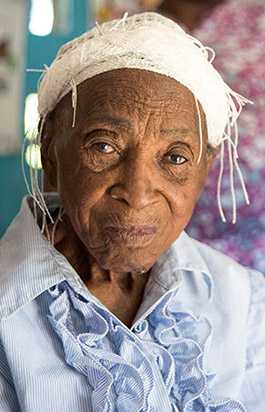Hypertension Control in Barbados: Building a System to Fight the “Silent Killer”

Barbados is known for its beautiful turquoise waters and fine soft sand. Against this tropical backdrop, Barbadians share some of the same health concerns as other people from around the world, such as high rates of hypertension—more commonly known as high blood pressure. Hypertension is responsible for 10.4 million preventable deaths worldwide, and is the leading risk factor for heart disease and stroke.
As in many countries, barriers to overcoming heart disease and stroke in Barbados are quite familiar—lack of exercise and an unhealthy diet. To tackle this challenge, the Ministry of Health (MoH) brought together a group of stakeholders—including the University of the West Indies and the Healthy Caribbean Coalition—to discuss effective disease prevention approaches. The stakeholders chose to pilot the Standardized Hypertension Treatment and Prevention Project (SHTP) at two of the island’s polyclinics within the MoH.

SHTP’s comprehensive and aggressive approach resulted in improved hypertension control among clinic patients; an increased number of patients receiving treatment; and the launch of the island’s first electronic registry to track patients’ progress in hypertension control. With an emphasis on coordinated patient care, clinic staff attended classes to learn standardized protocols for treating patients, including how to use automated blood pressure measurement devices.
Establishing an electronic registry presented quite a challenge. The transition from patient-based patient records to electronic medical records (EMR) was more difficult than anticipated. To prevent these issues for future EMR transitions, the team will seek stakeholder input for improved record entry and patient metrics design and presentation. The team also recommended a system overlap from paper to electronic records.
Like many countries, the Barbados Ministry of Health is faced with limited resources and competing priorities, such as responding to the Ebola and Zika outbreaks. An unexpected challenge was the behavior change required by seasoned healthcare providers who were accustomed to the patient treatment plans they had previously used. Despite the challenges, the healthcare providers remained vigilant and found creative ways to rethink their existing treatment recommendations and align with the newly established SHTP treatment protocols.

Even with hurdles, healthcare staff screened more than 30,000 people at the two clinics and captured improved hypertension control rates of 14.5% within 18 months. The SHTP project successfully brought together healthcare team members to coordinate patient care and work toward a common goal.
The pilot project has been completed, but Barbados will continue to implement the standardized hypertension treatment protocol as part of the Global Hearts Initiative to prevent heart attacks and stroke.
This initiative led by World Health Organization, US CDC, and other partners, aims to improve both prevention and treatment of cardiovascular health. The successful launch and implementation of the SHTP in Barbados serves as a model for other clinics in Barbados and around the world. Its success shows that through a coordinated team effort, adherence to evidence-based tools, systems and practices, countries can improve hypertension control and save lives.
- Page last reviewed: December 12, 2016
- Page last updated: December 12, 2016
- Content source:


 ShareCompartir
ShareCompartir